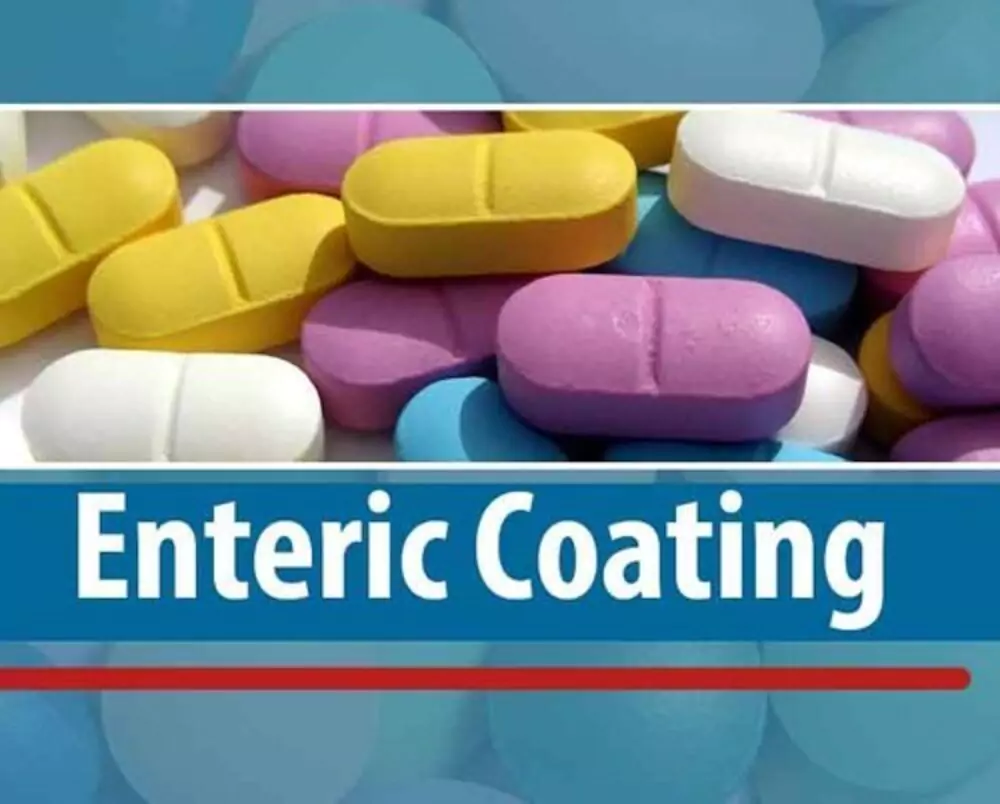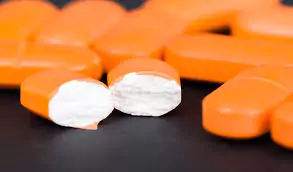Когда мы думаем о лекарствах, мы часто концентрируемся на том, как они помогают нам чувствовать себя лучше. Но знаете ли вы, что способ изготовления лекарства может влиять на его эффективность?
Два важных виды фармацевтических препаратов Покрытия, которые помогают лекарствам работать лучше, — это энтеросолюбильные покрытия и пленочные покрытия. Оба метода покрывают таблетки, чтобы защитить их и контролировать, как они высвобождают лекарство.
Давайте рассмотрим эти фармацевтические покрытия, как они могут повлиять на ваши лекарства и какое из них может подойти вам лучше всего.

Готовы ли вы улучшить свое производство с помощью высококачественных лаконаносящих машин?
Энтеросолюбильное покрытие и пленочное покрытие — два популярных метода, используемых в фармацевтической промышленности. Оба процесса предназначены для повышения эффективности лекарств путем защиты ингредиентов и обеспечения их доставки в нужную часть пищеварительной системы.
Хотя они служат схожим целям, они имеют разные области применения и характеристики.

Что такое энтеросолюбильное покрытие? Энтеросолюбильное покрытие — это специальный слой, который наносится на некоторые таблетки. Это покрытие помогает защитить лекарство внутри от желудочной кислоты.
Покрытие растворяется в кишечнике, а не в желудке. Это важно, поскольку некоторые лекарства могут быть повреждены желудочной кислотой, а энтеросолюбильное покрытие помогает сохранить их в безопасности.
Энтеросолюбильное покрытие обычно изготавливается из специальных материалов, которые устойчивы к кислой среде желудка. Это гарантирует, что лекарство останется нетронутым, пока не достигнет кишечника, где оно сможет должным образом всосаться.
Важно не разламывать таблетки с энтеросолюбильным покрытием. Когда вы их разламываете, вы можете повредить покрытие. Это означает, что лекарство может раствориться в желудке, а не в кишечнике. Если это произойдет, лекарство может не подействовать должным образом, и у вас может возникнуть расстройство желудка.
Например, если у вас таблетка с кишечнорастворимой оболочкой, предназначенная для облегчения изжоги, ее разламывание может привести к раздражению желудка вместо того, чтобы позволить лекарству эффективно действовать в кишечнике.
Нет, не стоит измельчать таблетки с энтеросолюбильным покрытием. Измельчение разрушит оболочку. Это может изменить действие лекарства. Всегда консультируйтесь с врачом или фармацевтом, если вам нужна помощь с приемом лекарств.
Некоторые люди могут подумать, что раздавливание таблетки может облегчить ее проглатывание, но это может привести к непредвиденным последствиям. Если вам нужно принять таблетку с энтеросолюбильной оболочкой, попробуйте найти альтернативные методы, например, проглотить таблетку целиком или попросить жидкую версию, если таковая имеется.

Что такое пленочное покрытие? Пленочное покрытие — это еще один способ защиты таблеток. Оно заключается в нанесении тонкого слоя на таблетку. Этот слой может помочь облегчить проглатывание таблетки.
Пленочное покрытие также может защитить лекарство от влаги и света. В отличие от энтеросолюбильного покрытия, пленочное покрытие обычно растворяется в желудке. Это означает, что лекарство может начать действовать быстро.
Пленочные покрытия обычно изготавливаются из полимеров, которые легко растворяются в желудочно-кишечном тракте. Это означает, что как только таблетка попадает в желудок, покрытие разрушается, позволяя лекарству высвобождаться и всасываться в кровоток.
Таблетки с пленочным покрытием часто более привлекательны для пациентов, поскольку имеют более гладкую поверхность. Это облегчает их проглатывание. Пленочное покрытие также может быть ароматизировано, что может помочь замаскировать неприятный вкус ингредиентов внутри.
Помимо улучшения вкусовых качеств, пленочное покрытие обеспечивает защитный барьер, который не позволяет влаге и свету разрушать таблетку. Это делает таблетки с пленочным покрытием отличным выбором для многих типов лекарств, которым необходимо сохранять свою эффективность с течением времени.
Давайте рассмотрим некоторые ключевые различия между энтеросолюбильным и пленочным покрытием:
| Особенность/Характеристика | Энтеросолюбильное покрытие | Покрытие пленкой |
| Цель и функция | Защищает от желудочной кислоты; высвобождается в кишечнике | Улучшает проглатывание; защищает от влаги |
| Место роспуска | Растворяется в кишечнике | Растворяется в желудке. |
| Состав материала | Изготовлен из кислотостойких полимеров | Изготовлен из полимеров, которые легко растворяются. |
| Тип приложения | Используется для лекарств, чувствительных к желудочной кислоте | Используется для различных лекарств |
| Стоимость и сложность производства | Как правило, более дорогой и сложный | Обычно менее затратный и более простой в применении |
| Возможность контролировать высвобождение препарата | Обеспечивает контролируемое высвобождение в кишечнике | В первую очередь предназначен для немедленного выпуска |
Энтеросолюбильное покрытие защищает лекарство от желудочной кислоты и позволяет ему растворяться в кишечнике. Пленочное покрытие помогает сделать таблетки более легкими для проглатывания и защищает их от влаги. Каждое покрытие выполняет уникальную функцию, основанную на конкретных потребностях лекарства.
Таблетки с энтеросолюбильным покрытием растворяются в кишечнике. Таблетки с пленочным покрытием растворяются в желудке. Это важно для того, как и когда лекарство высвобождается в организме. Например, если лекарство должно всасываться в кишечнике для максимальной эффективности, энтеросолюбильное покрытие необходимо.
Энтеросолюбильные покрытия часто изготавливаются из материалов, устойчивых к желудочной кислоте, например, полимеров. Пленочные покрытия обычно изготавливаются из материалов, которые легко растворяются в желудке. Выбор материалов влияет на то, как таблетка ведет себя после приема внутрь.
Энтеросолюбильное покрытие используется для лекарств, которым необходимо избегать желудочной кислоты. Пленочное покрытие может использоваться для многих типов таблеток, особенно тех, которые трудно проглотить. Эта универсальность делает пленочное покрытие популярным выбором в фармацевтической промышленности.
Энтеросолюбильное покрытие может быть более дорогим и сложным в применении по сравнению с пленочным покрытием. Это связано с тем, что материалы и процессы, используемые в энтеросолюбильном покрытии, требуют осторожного обращения. Производителям может потребоваться специализированное оборудование и методы для обеспечения надлежащего покрытия.
Энтеросолюбильное покрытие обеспечивает контролируемое высвобождение лекарства в кишечнике. Пленочное покрытие также может помочь контролировать высвобождение, но в основном предназначено для защиты и удобства глотания. Понимание того, как каждое покрытие влияет на высвобождение лекарства, является ключевым для производителей и поставщиков медицинских услуг.

Если вас интересует сравнение сахарного и пленочного покрытия, ознакомьтесь с нашей предыдущей статьей!
При выборе между энтеросолюбильным и пленочным покрытием следует учитывать следующие важные факторы:
| Фактор | Энтеросолюбильное покрытие | Покрытие пленкой |
| Правильное администрирование | Не должен быть сломан или раздавлен. | Можно разжевывать или измельчать (в зависимости от инструкции) |
| Избежание побочных эффектов | Защищает от раздражения желудка | Может не защищать от желудочной кислоты |
| Взаимодействие с лекарственными средствами | Помогает уменьшить раздражение желудка при приеме других лекарств | Может не обеспечивать защиту от взаимодействий |
| Безопасность лекарств | Безопасен для лекарств, раздражающих желудок. | В целом безопасно, но может не обеспечивать особой защиты. |
Обязательно следуйте инструкциям по приему лекарств. Некоторые таблетки нужно принимать целыми, а другие можно разжевывать или измельчать. Например, таблетки с энтеросолюбильным покрытием нельзя разламывать или измельчать. Это гарантирует, что они будут действовать так, как задумано.
Выбор правильного покрытия может помочь предотвратить побочные эффекты. Некоторые лекарства могут вызвать расстройство желудка, если они не покрыты надлежащим образом. Например, энтеросолюбильное покрытие может помочь защитить чувствительные лекарства от агрессивной среды желудка.
Это особенно важно для лекарств, которые, как известно, раздражают слизистую оболочку желудка. Если эти лекарства не покрыты энтеросолюбильной оболочкой, они могут вызывать дискомфорт и снижать комплаентность пациента.
Некоторые лекарства могут взаимодействовать друг с другом негативно. Выбор покрытия может помочь контролировать эти взаимодействия. Например, лекарства с энтеросолюбильным покрытием могут быть лучшим выбором для пациентов, принимающих другие лекарства, которые могут вызвать раздражение желудка.
Это может привести к улучшению общего опыта лечения и повышению эффективности используемых лекарств. Обсуждение потенциальных взаимодействий с поставщиком медицинских услуг может помочь определить наилучшее покрытие для конкретных ситуаций.
Важно убедиться, что покрытие безопасно для предполагаемого использования. Как энтеросолюбильные, так и пленочные покрытия, как правило, безопасны, но вам следует всегда консультироваться с врачом, если у вас есть опасения. Понимание последствий покрытия для безопасности лекарств может помочь вам принимать обоснованные решения.
Например, у некоторых пациентов может быть аллергия на определенные материалы, используемые в покрытиях. Знание этого может помочь избежать потенциальных побочных реакций и обеспечить безопасность пациента во время приема лекарств.
Если вы ищете высококачественные решения для покрытий, рассмотрите Canaan машины для нанесения покрытий.
Мы предлагаем надежные и эффективные варианты для процессов нанесения энтеросолюбильного и пленочного покрытия. Эти машины помогают обеспечить правильное покрытие лекарств, повышая их эффективность.
Связаться с нами сегодня, чтобы узнать больше!




Производство фармацевтической продукции третьей стороной — это когда компании передают производство продукции на аутсорсинг специализированным фирмам. Такая практика позволяет компаниям сосредоточиться на исследованиях и разработках. В этом руководстве мы рассмотрим преимущества, процессы и соображения, связанные с производством третьей стороной. Основные выводы Понимание производства фармацевтической продукции третьей стороной Производство фармацевтической продукции третьей стороной — это услуга, при которой компания нанимает […]

Фармацевтические открытия имеют решающее значение для поиска новых методов лечения заболеваний. Этот процесс начинается с определения целевых лекарственных препаратов и заканчивается выводом на рынок безопасных и эффективных препаратов. В этой статье мы объясняем каждый этап фармацевтических открытий и освещаем инновации, которые сегодня преобразуют эту область. Основные выводы Процесс открытия лекарств сложен и включает в себя множество […]

Если вы хотите узнать, как открыть фармацевтическую компанию, это включает в себя проведение маркетинговых исследований, разработку бизнес-плана, обеспечение финансирования и изучение нормативных требований. Это руководство охватит эти важные шаги и многое другое, чтобы помочь вам запустить и развить успешный фармацевтический бизнес. Основные выводы Проведение комплексного маркетингового исследования Запуск фармацевтической […]